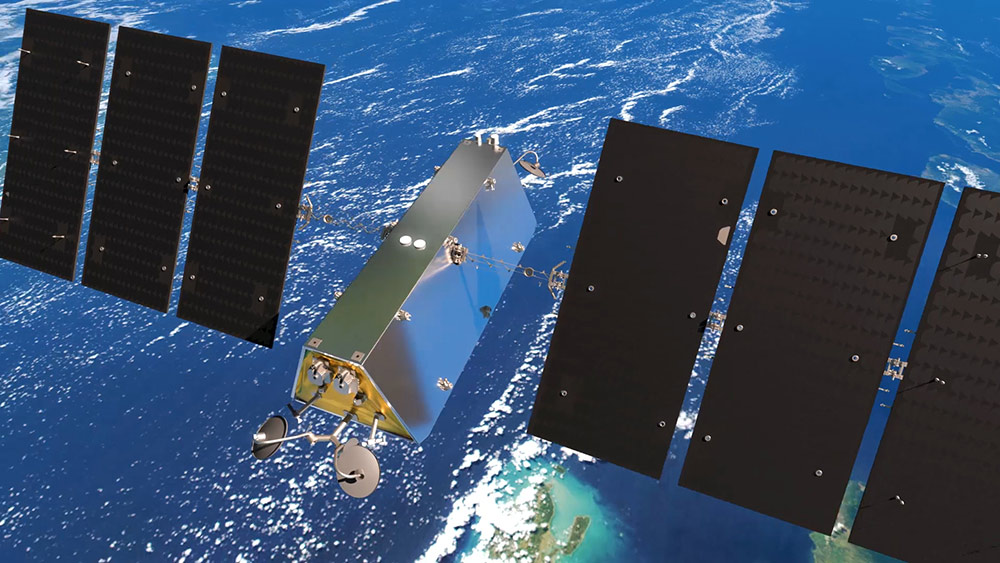
日益拥挤的近地轨道空间迎来了一位新朋友。2月9日,加拿大卫星运营商Telesat宣布,其计划于2023年底前发射近300颗低轨道卫星,以在全球范围内提供高速互联网服务。
但Telesat表示,该公司尚未“最终敲定”由泰雷兹阿莱尼亚太空公司制造卫星的全部融资。由于没能筹措足够的资金以建设大型卫星网络,先前的努力也被迫叫停,其中,软银集团旗下的OneWeb于去年申请破产(不过该公司后来获得了新融资)。
“全面建设的铺开和最终的卫星部署时间表,取决于项目融资的进展。”Telesat在一份声明中表示。
低轨道卫星通常位于地球上空几百到1000英里左右的位置。无论是否成功,Telesat公司的努力标志着低轨道卫星互联网这一领域迎来了第四位入局者。在此之前,埃隆•马斯克SpaceX公司的星链服务已经在北美部分地区以每月100美元的价格提供太空联网服务。刚走出破产困境的OneWeb现在由英国政府和其他投资者所有,也已经发射了100多颗卫星,并计划在2022年底前发射近650颗卫星。杰夫•贝佐的柯伊伯项目官宣了计划,但尚未开始发射卫星。这些新的尝试也与传统卫星服务构成了新的竞争——传统卫星位于更高的轨道,如在世界某些地区提供互联网服务的Viasat,价格相当昂贵。
与竞争对手不同,Telesat并不打算直接向普通家庭消费者提供“光速”服务。该公司表示,其受众定位是固定和移动网络运营商、航空和海事用户、企业客户和政府部门。个人消费者需要向这些运营商购买服务。
四家卫星互联网服务公司都在想办法,避免重蹈比尔•盖茨支持的Teledesic公司以及铱卫星和环球之星的覆辙。上世纪90年代,这些公司制定了一系列宏大计划,但随着成本飙升、投资资金池枯竭,它们最终或解散,或申请破产。虽然星链已经开始提供实际性的服务,但2月9日,埃隆•马斯克在推特上表达了卫星互联网服务“悲催的历史”带来的担忧。
“SpaceX需要一年左右的时间跨过负现金流的鸿沟,才能让星链在财务上生存下来。”马斯克写道,“历史上,每一家卫星互联网公司最终都走向了破产。我们希望,SpaceX可以成为第一个顺利活下去的公司。”(财富中文网)
编译:杨二一
加拿大卫星运营商Telesat计划发射近300颗卫星,用于其最新的“光速”卫星互联网服务。(Telesat供图)
日益拥挤的近地轨道空间迎来了一位新朋友。2月9日,加拿大卫星运营商Telesat宣布,其计划于2023年底前发射近300颗低轨道卫星,以在全球范围内提供高速互联网服务。
但Telesat表示,该公司尚未“最终敲定”由泰雷兹阿莱尼亚太空公司制造卫星的全部融资。由于没能筹措足够的资金以建设大型卫星网络,先前的努力也被迫叫停,其中,软银集团旗下的OneWeb于去年申请破产(不过该公司后来获得了新融资)。
“全面建设的铺开和最终的卫星部署时间表,取决于项目融资的进展。”Telesat在一份声明中表示。
低轨道卫星通常位于地球上空几百到1000英里左右的位置。无论是否成功,Telesat公司的努力标志着低轨道卫星互联网这一领域迎来了第四位入局者。在此之前,埃隆•马斯克SpaceX公司的星链服务已经在北美部分地区以每月100美元的价格提供太空联网服务。刚走出破产困境的OneWeb现在由英国政府和其他投资者所有,也已经发射了100多颗卫星,并计划在2022年底前发射近650颗卫星。杰夫•贝佐的柯伊伯项目官宣了计划,但尚未开始发射卫星。这些新的尝试也与传统卫星服务构成了新的竞争——传统卫星位于更高的轨道,如在世界某些地区提供互联网服务的Viasat,价格相当昂贵。
与竞争对手不同,Telesat并不打算直接向普通家庭消费者提供“光速”服务。该公司表示,其受众定位是固定和移动网络运营商、航空和海事用户、企业客户和政府部门。个人消费者需要向这些运营商购买服务。
四家卫星互联网服务公司都在想办法,避免重蹈比尔•盖茨支持的Teledesic公司以及铱卫星和环球之星的覆辙。上世纪90年代,这些公司制定了一系列宏大计划,但随着成本飙升、投资资金池枯竭,它们最终或解散,或申请破产。虽然星链已经开始提供实际性的服务,但2月9日,埃隆•马斯克在推特上表达了卫星互联网服务“悲催的历史”带来的担忧。
“SpaceX需要一年左右的时间跨过负现金流的鸿沟,才能让星链在财务上生存下来。”马斯克写道,“历史上,每一家卫星互联网公司最终都走向了破产。我们希望,SpaceX可以成为第一个顺利活下去的公司。”(财富中文网)
编译:杨二一
Canadian satellite operator Telesat plans to loft almost 300 satellites for its new Lightspeed Internet service from space.
COURTESY OF TELESAT
The increasingly crowded space of low Earth orbit is getting even more crowded. Canadian satellite operator Telesat announced on Tuesday details of its planned constellation of 300 satellites in low orbit to provide high-speed Internet service worldwide by the end of 2023.
But Telesat said it had not yet "finalized" full financing to back its plan with the satellites to be manufactured by Thales Alenia Space. Failure to find enough money to pay for building large satellite networks has stopped prior efforts, including most recently when SoftBank Group's OneWeb filed for bankruptcy last year, though it has since emerged with new backing.
"Commencement of full construction activities and the final constellation deployment schedule are subject to, and conditional upon, the progress of the financing for the program," Telesat said in a statement.
The Canadian effort marks at least the fourth plan currently seeking to offer Internet from low-orbiting satellites, typically a few hundred to 1,000 or so miles above the planet. Elon Musk's SpaceX's Starlink service is already offering Internet from space for $100 per month in parts of North America. OneWeb, out of bankruptcy and now owned by the British government and other investors, has lofted more than 100 satellites with plans to reach almost 650 satellites by the end of 2022. And Jeff Bezo’s Project Kuiper has announced big plans but not yet moved to launch satellites. The efforts also compete with traditional satellite services using higher orbits like Viasat that offer pricey Internet service in some parts of the world.
Unlike some of its rivals, Telesat does not plan to market Lightspeed directly to ordinary consumers at home. Instead, the company said it is targeting fixed and mobile network operators, aeronautical and maritime users, enterprise customers, and governments. Consumers would have to purchase service from one of those operators.
All four new space Internet services are seeking to avoid the fate of earlier efforts like the Bill Gates–backed Teledesic, as well as Iridium and Globalstar, which announced big plans in the 1990s but ended up disbanding or filing for bankruptcy after costs soared and money from investors dried up. And even though Starlink has started offering actual service, Elon Musk on Tuesday tweeted about his fears given the rough history of prior services.
"SpaceX needs to pass through a deep chasm of negative cash flow over the next year or so to make Starlink financially viable," he wrote. "Every new satellite constellation in history has gone bankrupt. We hope to be the first that does not."






